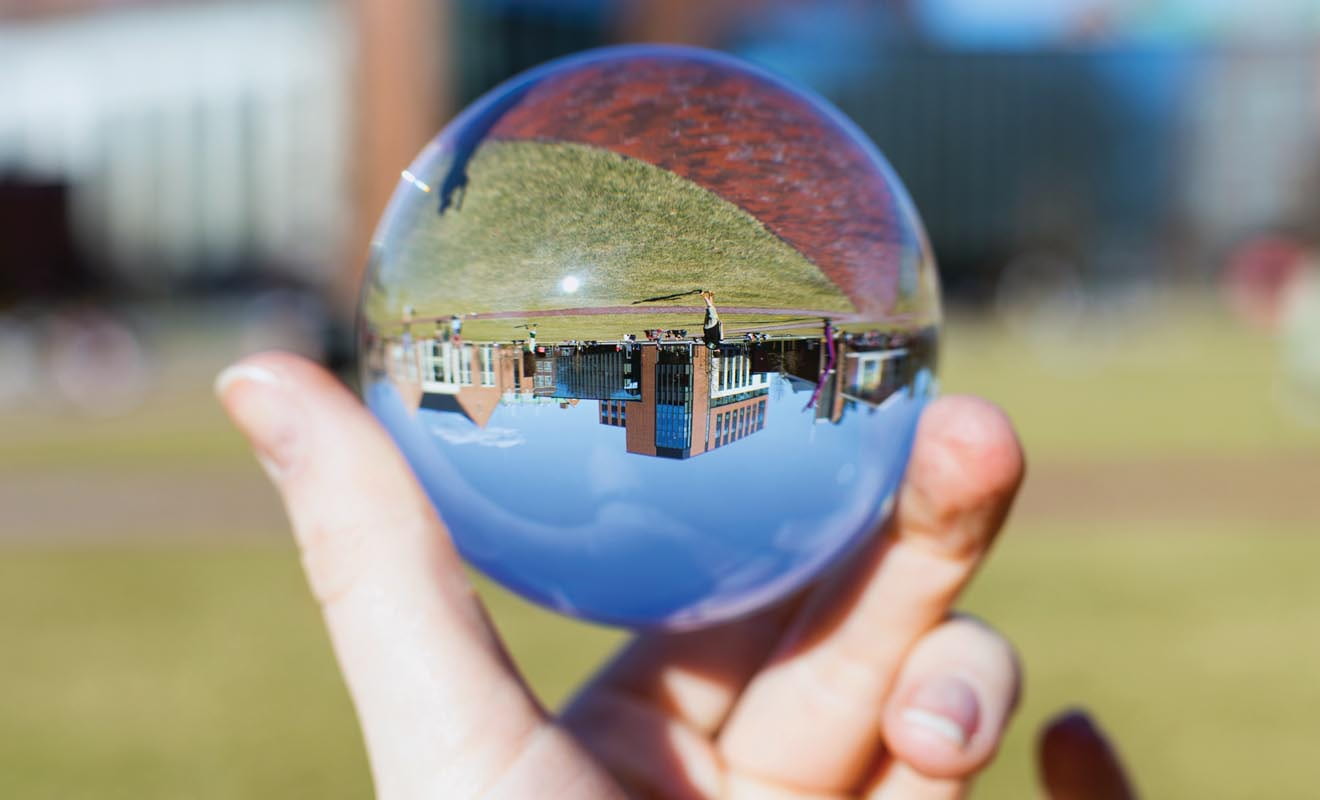WE ARE STILL WPI
The University Confronts an Unprecedented Challenge: How to Offer Its Unique, Hands-On Approach to Education While Making Health and Safety a Priority
Late January 2020 seems like an eternity ago. That’s when COVID-19 first crossed the Pacific and landed in the American Northwest. As the virus spread steadily across the country and around the globe, and as isolated outbreaks coalesced into a global pandemic, life changed in extraordinary ways.
At WPI, the changes began in early March as the university’s Coronavirus Emergency Response Team (CERT), guided by state and federal recommendations, first suspended international travel by faculty, students, and staff, and then required employees who could do so to work from home.
As COVID-19 gained a firm grip on the Northeast, and the risks of exposure to the virus became clearer, CERT’s attention focused on WPI’s core mission: educating students. The basic need was one WPI shared with virtually every other college and university: keeping the academic operation running while doing whatever was necessary to help students, faculty, and staff stay safe.
But the underlying challenge was uniquely WPI: maintaining the hands-on, personal, and interactive nature of the university’s distinctive approach to undergraduate teaching and learning when some or all of that learning might have to be conducted remotely, and when even on-campus instruction would be shaped by the need for students and instructors to protect themselves from the virus.
“These are uncharted waters, but this community is strong. We are problem solvers and together we will weather this storm.”
On March 18, President Laurie Leshin announced CERT’s decision that all D-Term undergraduate and fall-semester graduate classes would be moved online. The announcement that E-Term (summer) classes would also be held remotely followed soon after. The changes posed immediate challenges for faculty and staff, and for students and their families.
But an even greater challenge lay ahead. After considerable deliberation and study, CERT decided that while graduate classes would remain mostly online for at least the first half of the 2020–21 academic year, undergraduate classes would follow a model that offered in-person and remote classes, as well as some classes that were a hybrid of the two approaches.
“These are uncharted waters,” Leshin wrote in an email to the campus, “but this community is strong. We are problem solvers and together we will weather this storm.”
This is the story, in pictures and words, of how a problem-solving community took on one of the greatest challenges it has faced since its founding.
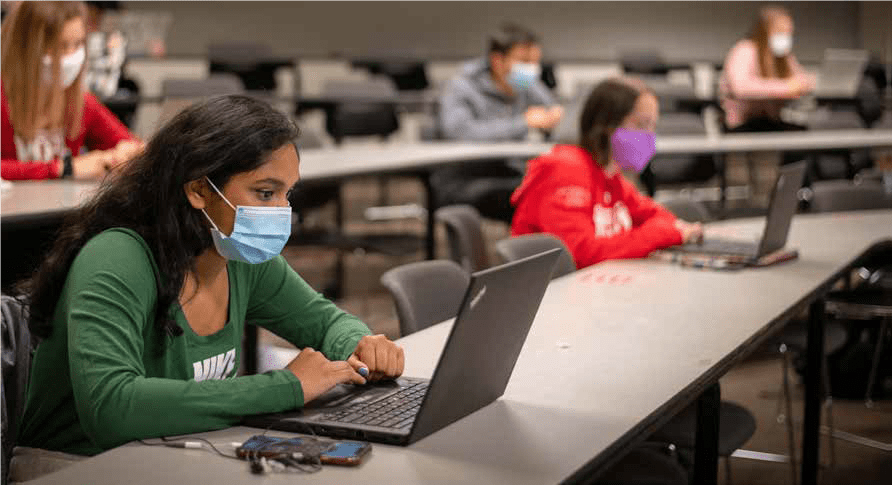
Using Technology to Create Flexibility
Taking what works in a classroom or teaching lab and making it work online is a challenge. Doing so in a way that gives faculty, staff, and students the flexibility to balance their work, lives, and health is even harder. The solution was a program that uses technology to provide flexibility. With this approach, courses may be delivered fully online, in-person, or with a combination of those approaches. WPI drew on its deep experience with online graduate education and the deep commitment of its faculty to connecting with their students. Over the years, WPI’s learning technologies teams have taught faculty to integrate the latest technologies—web, videoconferencing, recordings, simulations, virtual chat, and discussion boards—into their courses. “WPI was prepared for this moment,” says Dean of Engineering JOHN MCNEILL, who led the implementation of the new program. “We are recognized as a leading innovator in delivering diverse learning modes, and this approach played to our strengths.”
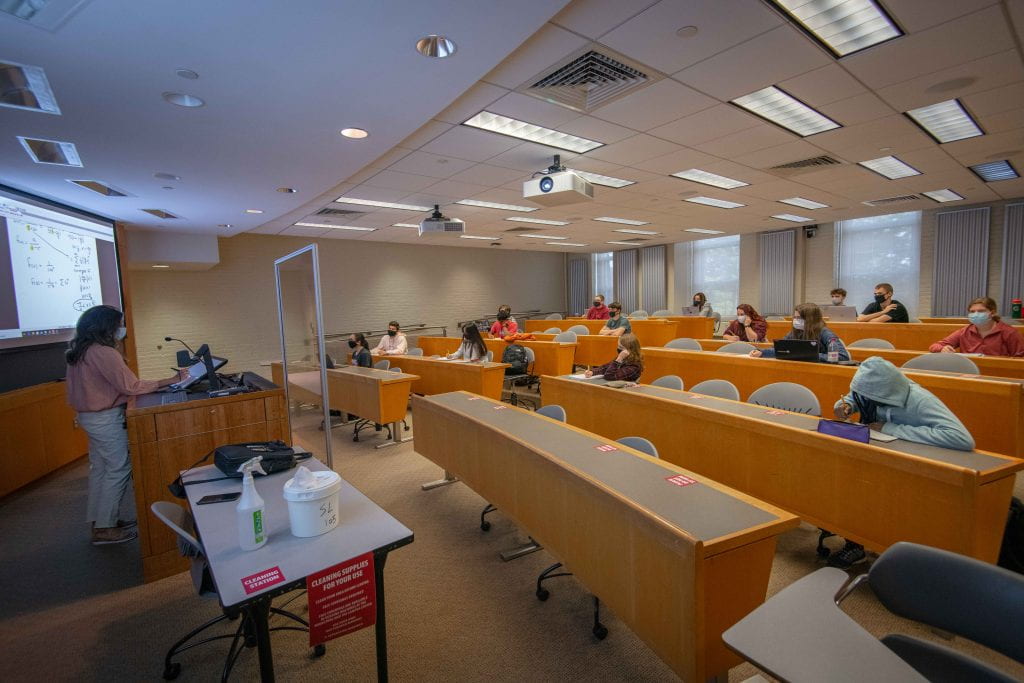
Preparing Pandemic-Adapted Classrooms
Classrooms, with students seated elbow-to-elbow and instructors lecturing just a few feet from the front row, were not designed for pandemics. Over the summer, WPI’s educators and facilities staff set to work to adapt classrooms and lecture halls. The changes ranged from the simple (marking which seats could be occupied and which must be left empty to accommodate social distancing), to the complex (upgrading HVAC systems to increase ventilation, or keeping windows open if upgrades were not possible—even in cold weather). Movable Plexiglas barriers in many classrooms provided an added layer of protection for faculty and students. The goal of these and other changes was simple: promoting personal safety while still enabling the personal connections that come from face-to-face classroom interactions.

Bringing the Classroom Outdoors
It’s well-known that being outside, where there is natural ventilation and where social distancing is easier, reduces the risk of spreading microbial infections. WPI’s campus and the open spaces around it offer many spots that are well-suited to educational pursuits, when the weather permits. This past fall, someone strolling the grounds might have come across a music ensemble rehearsing on the lawn behind Higgins House, KATE MCINTYRE leading a discussion in her creative writing class on a grassy spot near Salisbury Labs, or LISA STODDARD’s socially distanced Great Problems Seminar (above) underway in the Institute Park band shell. Dozens of Adirondack chairs were spread through the campus to provide outdoor study spots, while tables and chairs were set up under tents to create perfect spaces for group study or project team meetings.
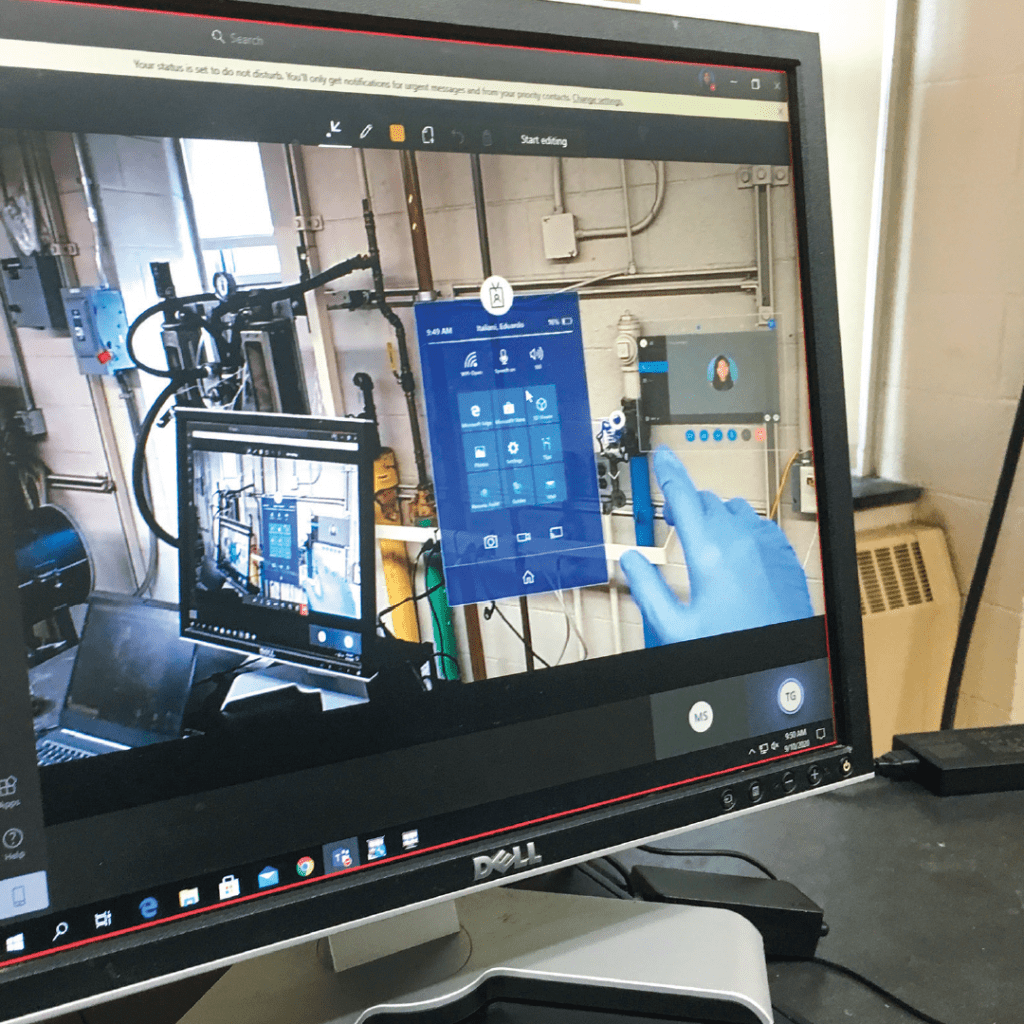
Doing Labs When You’re Not In the Lab
Hands-on labs are essential in many science and engineering disciplines, especially at WPI, where courses and labs are steppingstones to project work. But how do you do labs when you can’t be in the lab? WPI faculty rose to that challenge in a number of creative ways. For example, students wearing augmented reality glasses and using video chat and screen sharing brought other students into ANDREW TEIXEIRA’s Virtual Lab Experience for Chemical Engineering (above). In Chemistry and Biochemistry, ROBERT DEMPSKI and JOSÉ ARGUELLO created a classroom module that let undergraduates use augmented reality to visualize biomolecules. And high-res cameras let students see and participate in the operation of equipment in the “de-densified” 6,000-square-foot Chemical Engineering Senior Lab in Goddard Hall. “Remote students were able to fully participate in the lab and operate the equipment safely,” says STEPHEN KMIOTEK, professor of practice.
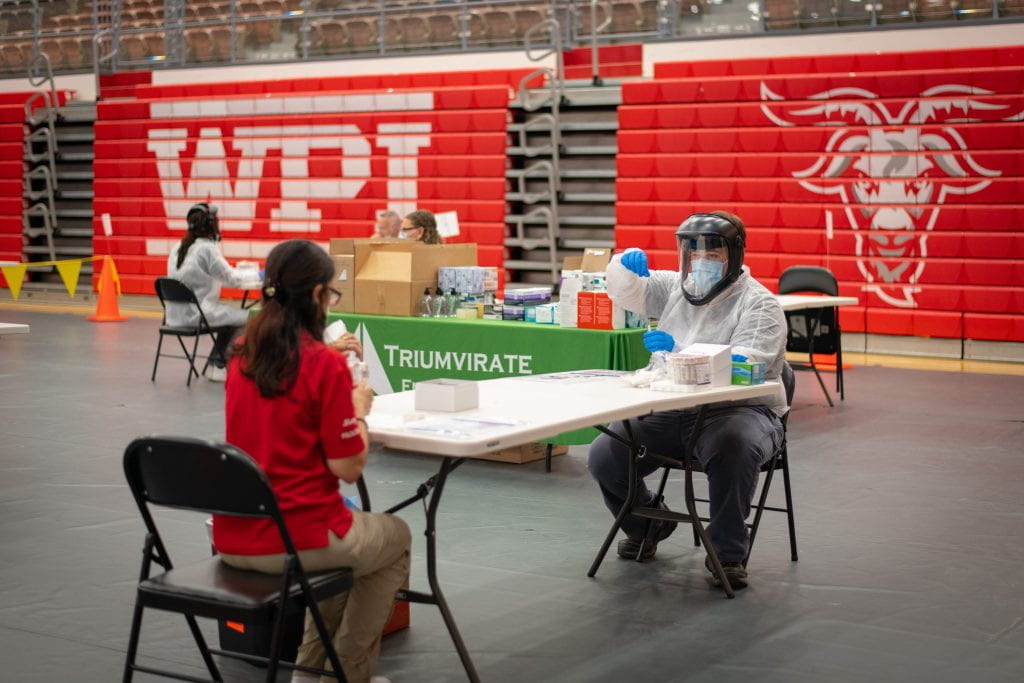
Behind the Teaching: Testing and Tracing
Among the keys to being able to return to the WPI campus in August, in the midst of a pandemic, were health and safety protocols that emphasized reducing viral spread (masks, social distancing, hand washing), knowing quickly if anyone was infected (testing, contact tracing), and isolating and quarantining those who do test positive. WPI’s comprehensive testing program requires those working or living on campus to be tested prior to arriving and then tested regularly after that. Results from tests, processed by the Broad Institute and other partners, are returned quickly. Daily entries in a symptom tracker app (developed by WPI’s IT Services and its COVID Health Behaviors Group) provide an early warning for the onset or progression of COVID-19 symptoms. By late fall, the program and its rigorous application had kept COVID-19 cases low at WPI and, most important, kept everyone focused on what matters most: teaching and learning.
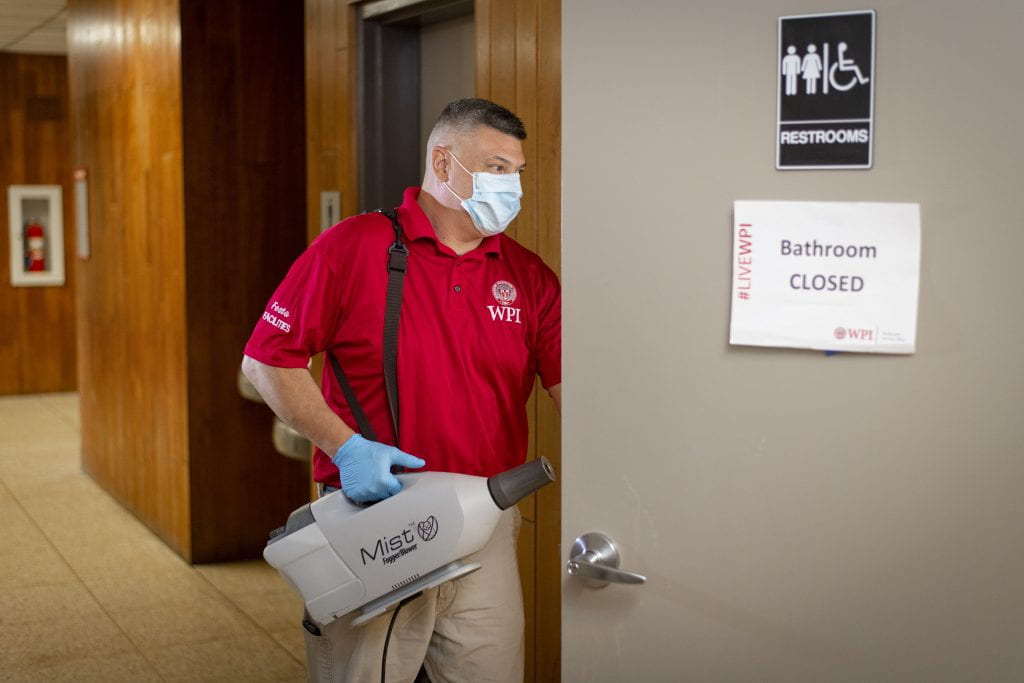
An Obsessive Focus on Keeping Things Clean
It was not unusual this past fall to see people in full hazmat suits working in classrooms and other public spaces on campus. It was part of a campuswide effort to mitigate the spread of the COVID-19 virus. In addition to providing cleaning and disinfecting supplies for students, faculty, and staff to use on desks, tables, and other areas before and after use, enhanced cleaning routines, including regular fogging, were carried out by Facilities crews. Whenever a community member tested positive for the virus, specially trained staff wearing coveralls, booties, and N95 respirators did a deep cleaning of the affected areas. “Deep cleaning is not vacuuming or dusting away cobwebs,” says DANIEL SARACHICK, director of environmental health and safety. “Our goal is to sanitize.”
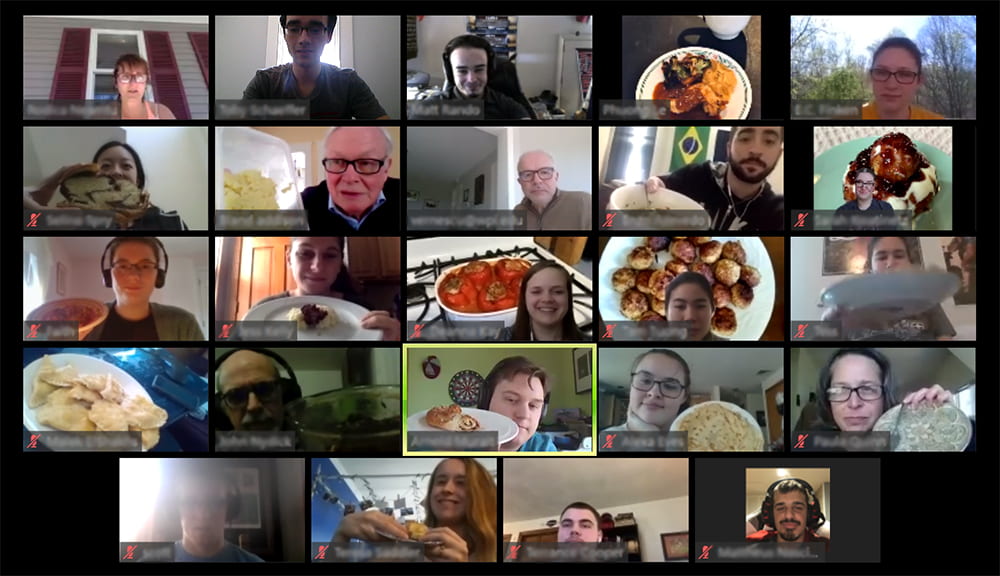
Global Projects in an Inaccessible World
WPI has earned a reputation as a pioneer and leader in global project-based education. Its network of more than 50 undergraduate project centers on six continents is without peer. But what happens to a global projects program when a global pandemic makes global travel impossible? When off-campus travel was cancelled for this academic year, WPI students and faculty responded as you might expect, creatively refocusing and reimagining planned project work. Some student teams completed their planned projects remotely. Others found new, domestic projects to tackle. Some chose to study the pandemic itself, including a team that had planned to study ecotourism in India, but instead created an archive of pandemic stories they collected. “The students have more capacity to be resilient than they probably realize,” says SARAH STANLICK, who was set to take students to the Berlin Project Center. “Working under an emergency situation and pivoting … that is a great lesson to learn.”
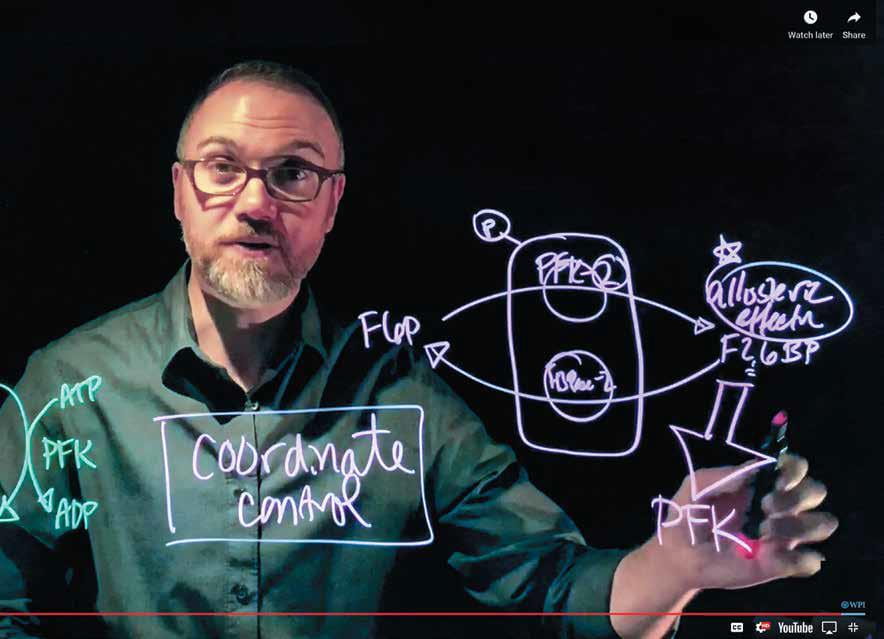
A Pandemic Inspires Teaching Innovations
The prospect of teaching remotely, potentially for the better part of a year, prompted WPI’s faculty to rethink how they deliver online classes. One goal was to retain the personal interaction between student and teacher that is a hallmark of in-person instruction, particularly at WPI. For example, DESTIN HEILMAN, teaching professor of chemistry and biochemistry, was inspired to develop an innovative light board (above) that allowed him to face students while writing material on the board. “There is growing evidence that online lectures that include the lecturer’s face result in better student attention and learning outcomes,” he says. For NANCY BURNHAM, professor of physics, the aim was giving students in General Physics–Mechanics, the second largest class at WPI, a robust learning experience, whether they participated remotely or in person. She delivered lectures remotely to nearly 500 students and held conferences with smaller groups. She also used a sophisticated software platform to deliver quizzes.
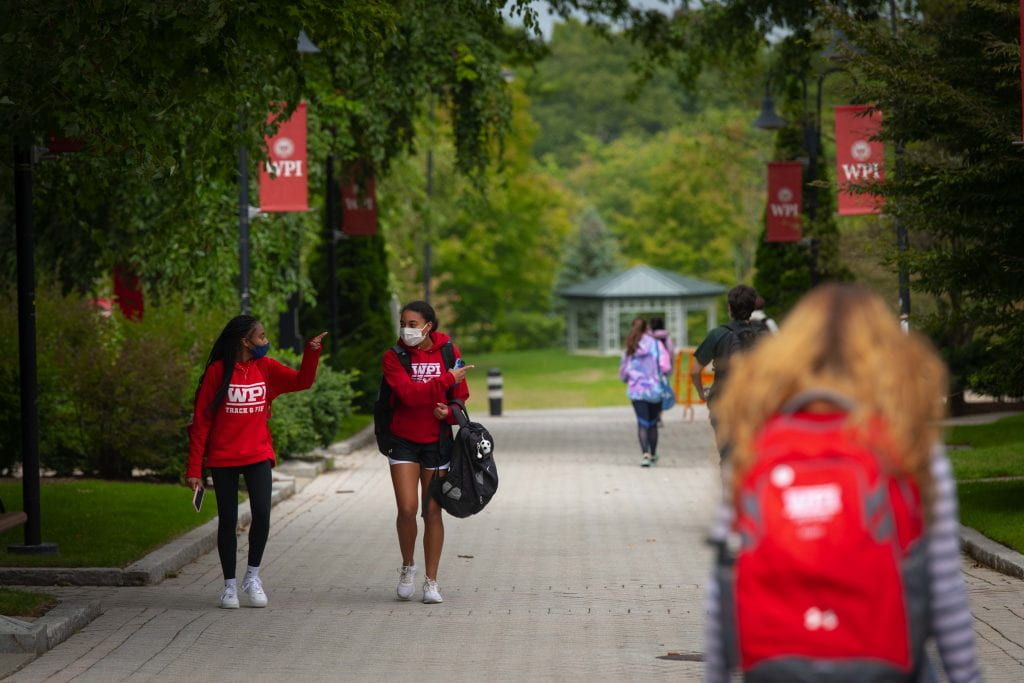
Living Together, But Spread Apart
De-densification. In essence, it means spreading people apart to reduce the close contact that can lead to the transmission of a virus. That idea was a guiding principle behind much of WPI’s approach to operating during a pandemic. One place where it was particularly evident was in repopulating its residence halls. In addition to reducing the number of students per room, the plan for residential living also included a ban on visitors and limits on the number of students allowed in bathrooms and elevators (one rider at a time). Lounges and other common areas were closed, and students were required to wear face coverings when outside of their rooms. They were also required to clean and disinfect shared bathrooms and kitchens after using them. To compensate for the capacity lost due to de-densification, the university rented the nearby Hampton Inn and transformed it into a temporary residence hall.
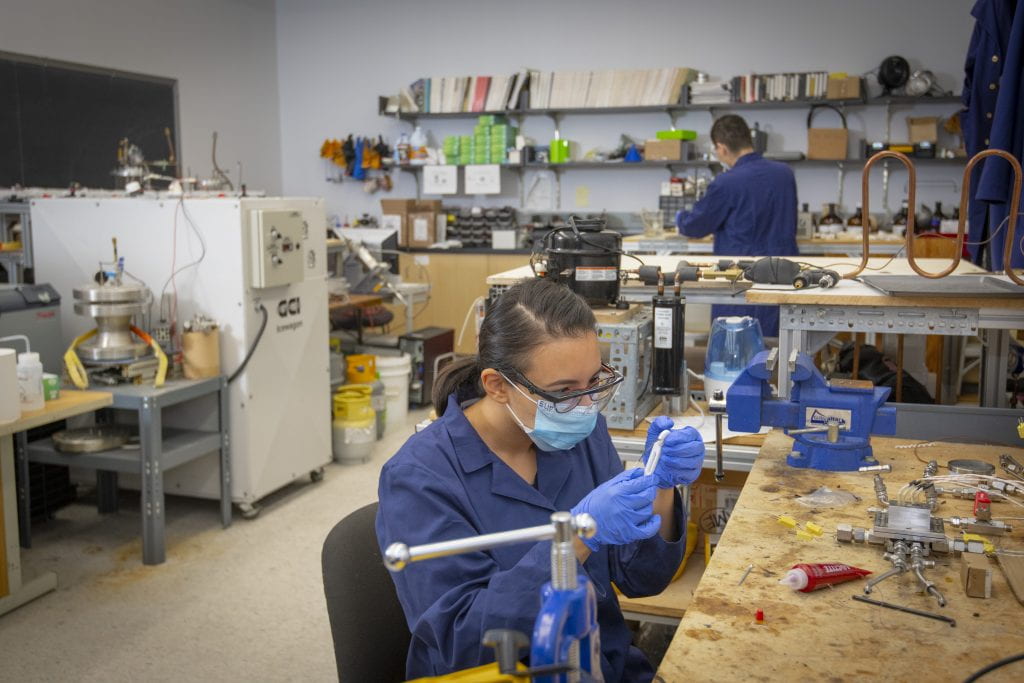
Discovery Couldn’t Wait for the Pandemic to End
When faculty members and students went home in the early days of the pandemic, the university’s critical research continued. Research is no small enterprise at WPI. There was no way it could stop; it just changed locations. To make the switch from using state-of-the-art laboratories to working at home in their basements or kitchens, researchers redesigned their projects, analyzed data they’d already collected, wrote grant proposals and papers, and made plans for the days when they could return to campus. And when they did return during the summer—under tightly controlled conditions and in alignment with state and federal public health guidelines—they jumped back in with loads of newly analyzed data, newly crafted research plans, and a wealth of submitted research proposals.
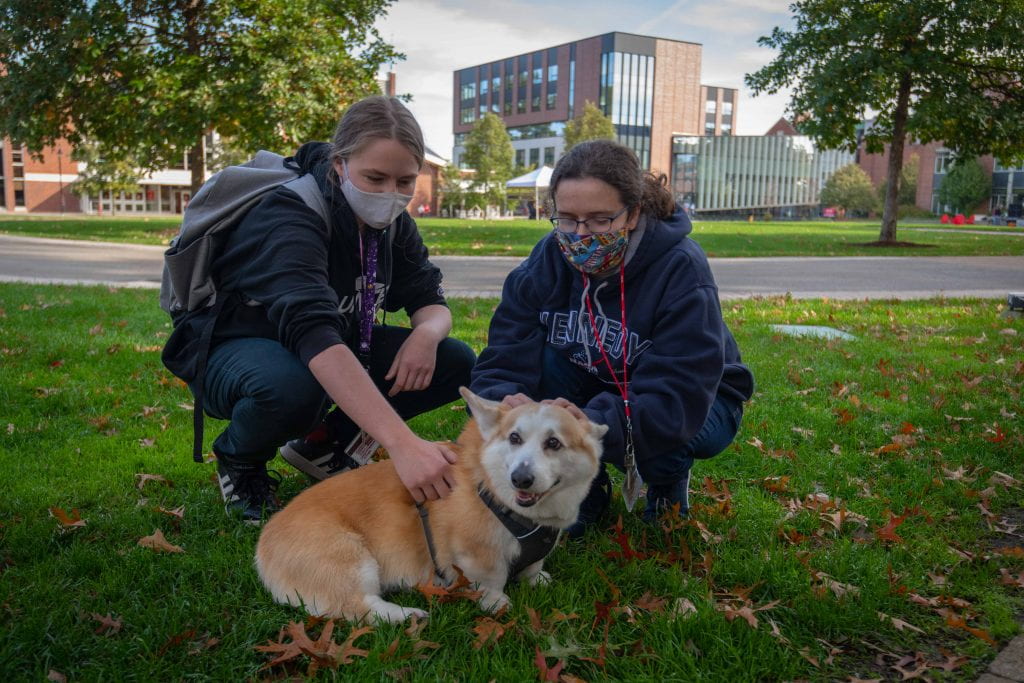
Supporting the Community in Uncertain Times
In a survey conducted by WPI’s Morgan Teaching and Learning Center, more than half of the WPI faculty reported feeling stressed and overwhelmed. Stress and loneliness are understandable responses to the looming threat of infection, to the changes that have upended much of what was once “normal,” and to the constant need to keep our distance from those with whom we long to engage. In addition to a variety of services offered to students by the university’s Student Development and Counseling Center, WPI is responding to all members of the community who need help coping. That response includes the School of Arts and Sciences’ Be Well Together program, with virtual yoga and mindfulness sessions, therapy dogs, including visits from President Leshin’s corgi “space pup” Hudson, and fun student activities that let students socialize and let off steam, safely. If there is a theme to it all, it is simply this: we’re all in this together, and together we’ll get through it.
Read more stories about the strength, creativity, and resiliency of the WPI community during the COVID-19 pandemic.



